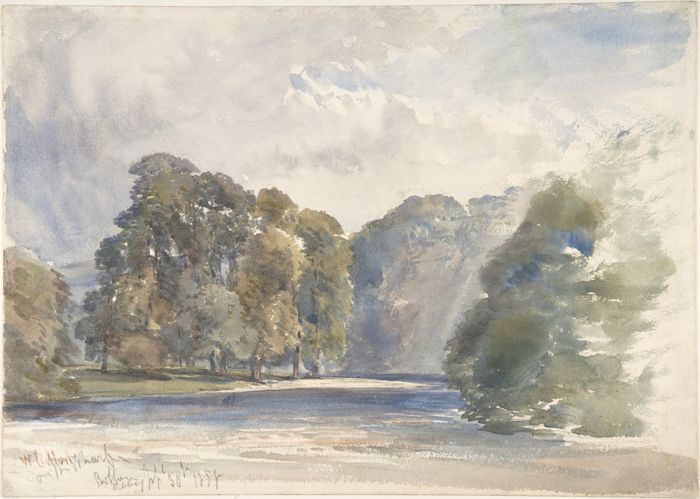
On the Wharfe, Bolton Abbey
William Callow
An item at Metropolitan Museum of Art
This drawing demonstrates Callow’s mastery of watercolor as a sketching medium. He applied wet pigment onto dampened paper in some portions of the sheet and used a dry-brush technique in others. Earlier in his career the artist had worked in Paris and was influenced by artists in the circle of Richard Parkes Bonington (1802-1828). From them Callow learned how to construct lucid, fluidly painted compositions and developed a taste for luminous color. He returned to England in 1841 and made this sketch during an 1858 trip to Yorkshire. An inscription at lower left dates his visit to September 30th and identifies the subject as the River Wharfe near Bolton Abbey, a stretch of water renowned for its natural beauty.
Drawings and Prints
An exhibit at Metropolitan Museum of Art
The Department’s vast collection of works on paper comprises approximately 21,000 drawings, 1.2 million prints, and 12,000 illustrated books created in Europe and the Americas from about 1400 to the present day. Since its foundation in 1916, the Department has been committed to collecting a wide range of works on paper, which includes both pieces that are incredibly rare and lauded for their aesthetic appeal, as well as material that is more popular, functional, and ephemeral. The broad scope of the department’s collecting encourages questions of connoisseurship as well as those pertaining to function and context, and demonstrates the vital role that prints, drawings, and illustrated books have played throughout history.




